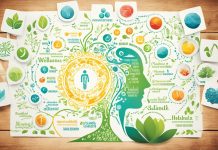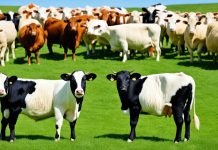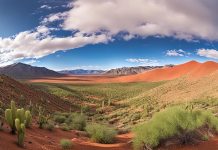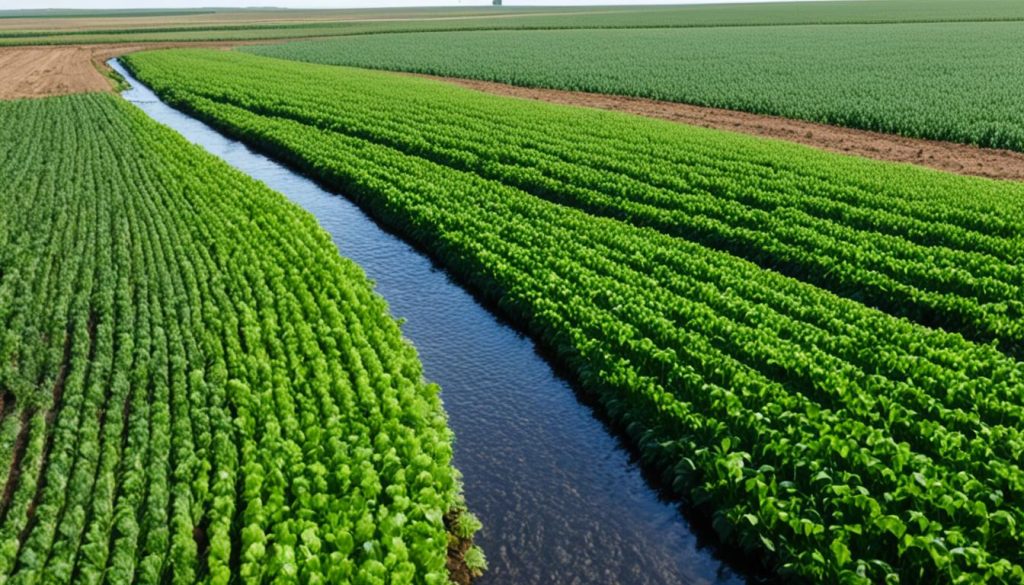
Throughout the United States, waterways are vital lifelines. However, with the continuous interaction between land and water, polluted water sources are unfortunately commonplace, posing serious risks to ecosystems and human health. A primary cause for alarm comes from the widespread issue of water pollution over land, where water travel itself becomes a conduit for introducing contaminants into otherwise pristine environments. Our focus narrows down to sources of water pollution, specifically those pollutants originating from the very ground we live, work, and play on.
As the journey of water begins with rainfall or melting snow, it doesn’t take long before it encounters various pollutants. This journey can rapidly transform a clean droplet into a carrier of toxins, particularly when land pollution impacting water sources goes unchecked. Be it the rolling hills of rural farmland or the bustling streets of an urban neighborhood, the challenge remains the same: managing and mitigating the risks of contaminated water sources. Whether through agricultural runoff or urban stormwater discharge, the complex issue of pollution during water travel demands our attention. Join us as we dive into how water pollution from land starts, travels, and ultimately affects the world around us.
Key Takeaways
- Understanding runoff and its role in transporting pollutants is key to managing water pollution over land.
- Human activities and development contribute significantly to water pollution from land, highlighting the need for better waste management.
- Recognizing the diverse sources of water pollution is essential in developing effective environmental protection strategies.
- Efforts to reduce land pollution impacting water sources can mitigate the risks associated with contaminated water sources.
- Educating the public about the consequences of pollution during water travel encourages community involvement in pollution prevention.
Understanding Runoff and Its Polluting Effects on Water Sources
Runoff pollution is a critical environmental issue, where land-based water pollution from various sources detrimentally affects our aquatic ecosystems. The dynamics of water pollution are complex, navigating through the interplay of natural events and human activities, each contributing to the polluted sources of water we witness today.
Defining Runoff: Pathways to Pollution
Runoff is the excessive water flow over land, failing to be absorbed and thus causing a transport of pollutants into natural bodies of water. This process can lead to a significant increase in water pollution, affecting rivers, lakes, and streams. Beyond just carrying debris and sediment, runoff serves as a conduit for various runoff contaminants, marking it as a central subject in studies on pollution sources and water pollution dynamics.
Sources of Runoff: Natural vs. Human-Induced
The sources of runoff can range from the natural, such as snowmelt and rain, to human activity runoff, including agricultural, urban, and suburban areas. Natural runoff moves organic material and soil, whereas human-induced runoff carries harmful fertilizers, pesticides, and chemicals, escalating the runoff pollution scenario. These forms of runoff pollution contribute to the degradation of water quality and ecosystems, an issue that’s intensifying with each passing year.
The Impact of Impervious Surfaces on Water Pollution
Urban development has exponentially increased the presence of impervious surfaces, greatly facilitating runoff increase. These hard surfaces, including roads and sidewalks, prevent the natural infiltration of water into the ground. The resulting swift water flow exacerbates the transport of pollutants, systematically reducing water infiltration and crippling soil’s natural filtering capability, thereby intensifying urbanization and runoff consequences.
How Pollution Accumulates in Ecosystems through Biomagnification
Runoff carries toxins into aquatic environments, where they enter the food chain and lead to biomagnification. This process entails the contaminants magnification throughout the trophic levels, accumulating higher concentrations in the bodies of predators. Pollution accumulation in food chains not only impacts wildlife but poses substantial risks to human health, as the pollutants are ultimately consumed by us.
Addressing runoff pollution requires an integrated understanding of its sources and pathways. Tackling impervious surfaces, reducing contaminants at their origin, and managing land use are critical steps toward mitigating the ecosystem impact of runoff. As researchers unravel the complexities of water pollution dynamics, it becomes clear that both individual and collective efforts are needed to preserve the quality of our precious water resources.
Major Pollutants and Their Journey from Land to Water
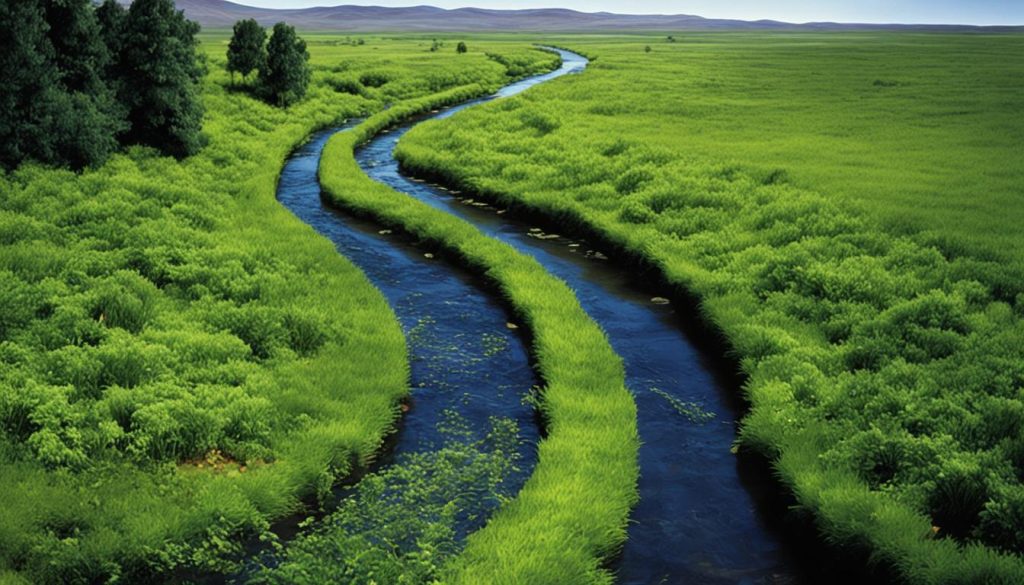
As the world grapples with the escalating issue of land to water contamination, it’s crucial to understand the various types of water pollutants that contribute to this dire situation. We observe a multitude of substances taking a destructive journey, ushering in a wave of pollutants affecting water bodies globally.
Among the primary culprits are industrial waste and wastewater, which carry harmful chemicals such as mercury and lead. These industrial by-products are notorious for entering nearby rivers, lakes, and streams without proper treatment, leading to significant ecological imbalances. Household waste, heavy with everyday chemicals and dangerous pathogens, similarly impairs the quality of our water sources.
Not to be overlooked, agricultural runoff rich in pesticides and chemical fertilizers, exaggerates this problem, particularly during rainfall. When downpours occur, a toxic cocktail of these agricultural chemicals is swept into bodies of water. This influx can lead to eutrophication, an overflow of nutrients that wreaks havoc on aquatic ecosystems and facilitates the spread of diseases, proving detrimental to both marine and human life.
| Pollutant Type | Common Sources | Environmental Impact |
|---|---|---|
| Industrial Waste | Factories, Refineries | Heavy metal contamination, Bioaccumulation |
| Wastewater | Households, Sewer Systems | Pathogen spread, Oxygen depletion |
| Marine Dumping | Shipping, Illegal Disposal | Plastic pollution, Marine wildlife endangerment |
| Agricultural Runoff | Farms, Pastures | Eutrophication, Pesticide accumulation |
| Oil Spills | Oil Drilling, Transport Accidents | Habitat destruction, Long-term ecosystem damage |
Addressing these water pollutants journey from land to water is of paramount importance for not only conserving our water bodies but also for maintaining the delicate balance of our planet’s ecosystems. Transparent reporting, stringent regulations, and proactive prevention are needed to tackle the sources and effects of such contamination.
The Dangers of Ground Water Contamination
The silent crisis unfolding below us lies in the delicate connection between groundwater and surface water, with each influencing the other’s purity. Recognizing this groundwater surface water interconnection is paramount in assessing groundwater contamination risks. Substances from the surface don’t merely vanish into the earth; instead, they infiltrate through layers of soil, menacing the reservoirs that nestle beneath. Ensuring the protection of these unseen but vital water supplies is an urgent matter of both environmental and public health concern, and one that necessitates comprehensive strategies and strict vigilance.
The Relationship Between Groundwater and Surface Water
When it comes to protecting water supplies, understanding the symbiotic relationship between groundwater and surface water is essential. Pollution impacts on groundwater don’t occur in isolation; they reverberate, affecting rivers, lakes, and oceans. Areas proximate to water supply sources are especially vulnerable, and the infiltration of hazardous elements can turn once-potent water reserves into vectors of contamination. The perpetual over-watch and mitigation of potential threats are intrinsic to safeguarding the quality and availability of our water.
Groundwater Pollution: The Challenge of Remediation
Groundwater pollution remediation stands as a daunting task. Once pollutants seep into groundwater, the battle against them is marred by uncertainty and exorbitant costs. These invasive contaminants can migrate for miles underground, forgoing easy detection and forming challenging plumes of pollution. The glacial pace of groundwater’s natural cleansing process compounds the issue, with diffusion and dilution taking years or even decades, underscoring the adage that prevention is better than cure in the context of groundwater contamination.
Primary Human Activities Contributing to Groundwater Contamination
Human activity groundwater contamination stems from various sources, exacerbating the difficulty of cleanup and containment. Ignored spills, leaking septic systems, disposal issues, and the like, all contribute to a deteriorating groundwater quality. Municipal, industrial, and residential waste—not managed with the necessary precaution—can inflict irreversible damage. Acknowledging these contamination sources and their wide-reaching effects is crucial as we strive to diminish household waste impact and industrial carelessness, ensuring the ongoing health of our invaluable underground reserves.
FAQ
Q: Which water source may become polluted as it travels over land?
A: Runoff is the primary water source that may become polluted as it travels over land. It collects and transports pollutants from various sources over the ground surface into nearby creeks, streams, and bodies of water.
Q: What are the effects of runoff on water pollution?
A: Runoff can carry a wide range of pollutants such as chemicals, sediment, debris, and toxic substances, contributing to the pollution of water sources. It increases with impervious surfaces, and leads to biomagnification where pollutants become more concentrated higher up the food chain.
Q: What are the differences between natural and human-induced sources of runoff?
A: Natural runoff includes processes like snowmelt and soil erosion, while human-induced runoff stems from point sources, like direct discharges from factories, and nonpoint sources, such as diffuse pollutants from agricultural and urban areas.
Q: How do impervious surfaces contribute to water pollution?
A: Impervious surfaces like roads and sidewalks prevent water from soaking into the ground. They facilitate quick transport of pollutants to water bodies without the natural filtration that occurs when water seeps through soil, thus exacerbating water pollution.
Q: What is biomagnification and how does it relate to runoff?
A: Biomagnification refers to the increasing concentration of pollutants at each successive trophic level in a food chain. Runoff can introduce these pollutants into water systems, which are then absorbed by organisms and increased in concentration as they move up the food chain, affecting human health and ecosystems.
Q: What are some major pollutants that travel from land to water sources?
A: Major pollutants include industrial waste, wastewater from sewage, marine dumping, oil spills, pesticides, and chemical fertilizers. These substances can come from a variety of sources and have detrimental effects on water quality and aquatic life.
Q: How are groundwater and surface water connected?
A: Groundwater and surface water are closely interconnected, with contaminants on land potentially percolating through soil layers to pollute groundwater, which can then impact surface water bodies. This relationship requires careful monitoring and management to prevent pollution.
Q: What makes groundwater pollution difficult to remediate?
A: Groundwater pollution is challenging to remediate because contaminants can migrate over long distances and become concentrated in slow-moving plumes. The slow movement of groundwater also limits the natural processes of dilution and dispersion, making cleanup efforts long and costly.
Q: Which human activities contribute to groundwater contamination?
A: Various human activities contribute to groundwater contamination, including improper waste disposal, septic system effluent, chemical spills from storage tanks, and landfill leaks. These activities can introduce pollutants such as bacteria, nitrates, and toxic chemicals into groundwater sources.



